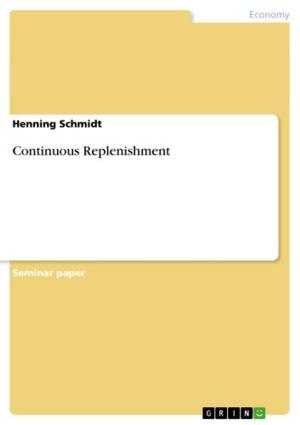Wildlife corridors and their effects on brown bears (Ursus arctos): a survey of Alberta citizens on knowledge and attitudes
Nonfiction, Science & Nature, Science, Biological Sciences, Ecology| Author: | Maria Wechselberger, Mag. | ISBN: | 9783638210072 |
| Publisher: | GRIN Publishing | Publication: | August 1, 2003 |
| Imprint: | GRIN Publishing | Language: | English |
| Author: | Maria Wechselberger, Mag. |
| ISBN: | 9783638210072 |
| Publisher: | GRIN Publishing |
| Publication: | August 1, 2003 |
| Imprint: | GRIN Publishing |
| Language: | English |
Master's Thesis from the year 2002 in the subject Biology - Ecology, grade: 2 (B), University of Vienna (Institute for Ecology), 67 entries in the bibliography, language: English, abstract: 'If all the brown bears are gone from the landscape we would be spiritually impoverished.' was the response from a researcher when she was asked why we should protect bears. This is only one of numerous answers to this question. Bears engage our interest, as do few other wild animals. But brown bears are not simply fascinating animals, they also play an important role in the ecosystem. They are considered 'sustainable farmers'. Many species, both plants and animals, profit by them. Brown bears dig much for food and thereby they stimulate plants to reproduce. Some Canadian scientists even consider grizzlies, conspecific with the Eurasian brown bear, to be an ecological keystone. 'Without the grizzlies atop the food chain,' they say, 'the West's delicate mountain ecosystem would crumble.' They think that it could set off a chain reaction that would see other large animals become extinct. Coyotes and other predators would move in and do serious damage to the ungulate population. Grizzlies prey on live ungulates far less than coyotes or wolves. The bears´ presence keeps other predators at bay. Other scientists such as Stephen Herrero, the head of the Eastern Slopes Grizzly Bear Project, do not believe in such dire predictions but Stephen Herrero agrees that the relationship between bears and the rest of the ecosystem is very complex (Sillars 1998). However, large carnivores, like grizzlies, have been considered indicators of health or integrity of an ecosystem (Paquet and Wierzchowski 1997a) and thus make them useful focal species for large-scale conservation. Landscapes that retain viable populations of brown bears are often ones where natural vegetation predominates, where most native species can still be found, and where ecological processes operate essentially as they have done for a long time (Paquet and Jack Wierzchowski 1997a). Habitats of brown bears can be huge, but vary greatly on individuals. A modest female can manage to live within a few square kilometres, and long distance travellers among grizzlies, that are mostly males, could need up to 1500 km², which is as big as Kootenay National Park in Alberta or only a bit smaller than the Austrian 'Hohe Tauern National Park', the biggest national park in Central Europe.
Master's Thesis from the year 2002 in the subject Biology - Ecology, grade: 2 (B), University of Vienna (Institute for Ecology), 67 entries in the bibliography, language: English, abstract: 'If all the brown bears are gone from the landscape we would be spiritually impoverished.' was the response from a researcher when she was asked why we should protect bears. This is only one of numerous answers to this question. Bears engage our interest, as do few other wild animals. But brown bears are not simply fascinating animals, they also play an important role in the ecosystem. They are considered 'sustainable farmers'. Many species, both plants and animals, profit by them. Brown bears dig much for food and thereby they stimulate plants to reproduce. Some Canadian scientists even consider grizzlies, conspecific with the Eurasian brown bear, to be an ecological keystone. 'Without the grizzlies atop the food chain,' they say, 'the West's delicate mountain ecosystem would crumble.' They think that it could set off a chain reaction that would see other large animals become extinct. Coyotes and other predators would move in and do serious damage to the ungulate population. Grizzlies prey on live ungulates far less than coyotes or wolves. The bears´ presence keeps other predators at bay. Other scientists such as Stephen Herrero, the head of the Eastern Slopes Grizzly Bear Project, do not believe in such dire predictions but Stephen Herrero agrees that the relationship between bears and the rest of the ecosystem is very complex (Sillars 1998). However, large carnivores, like grizzlies, have been considered indicators of health or integrity of an ecosystem (Paquet and Wierzchowski 1997a) and thus make them useful focal species for large-scale conservation. Landscapes that retain viable populations of brown bears are often ones where natural vegetation predominates, where most native species can still be found, and where ecological processes operate essentially as they have done for a long time (Paquet and Jack Wierzchowski 1997a). Habitats of brown bears can be huge, but vary greatly on individuals. A modest female can manage to live within a few square kilometres, and long distance travellers among grizzlies, that are mostly males, could need up to 1500 km², which is as big as Kootenay National Park in Alberta or only a bit smaller than the Austrian 'Hohe Tauern National Park', the biggest national park in Central Europe.















